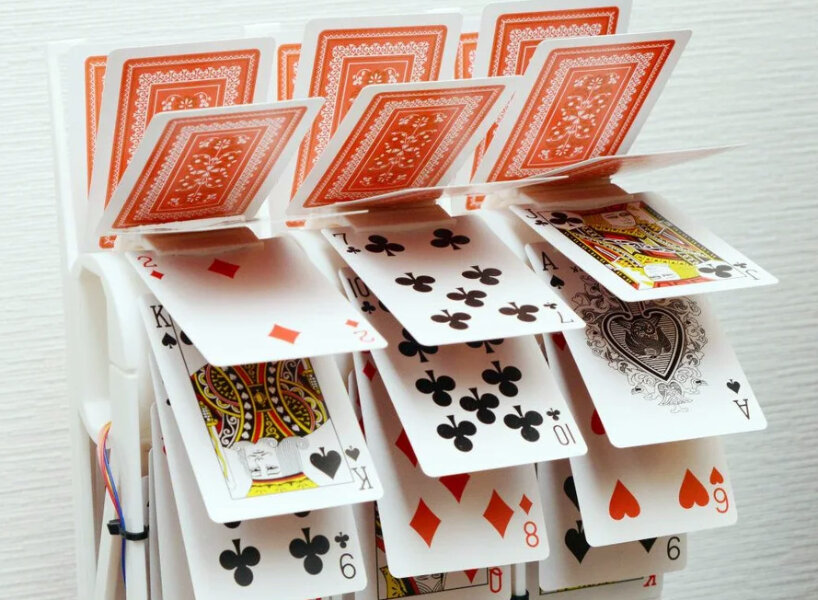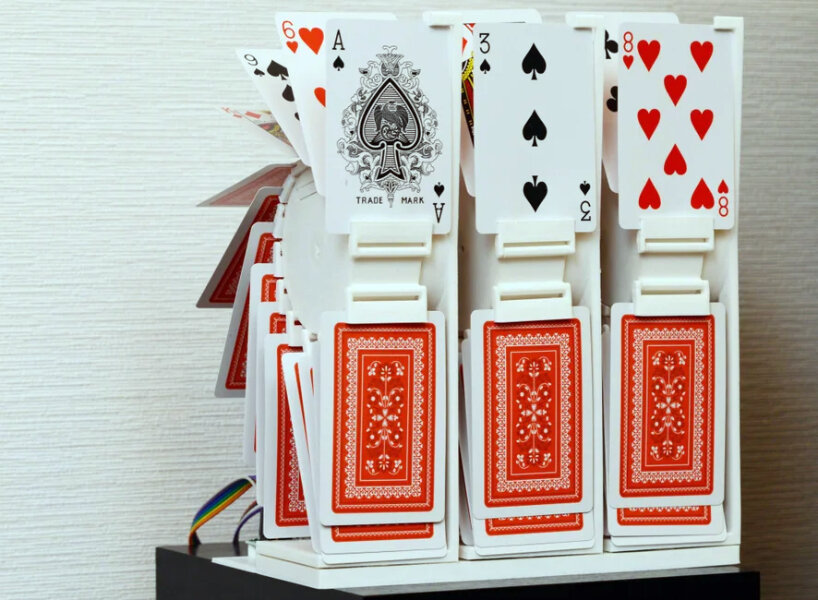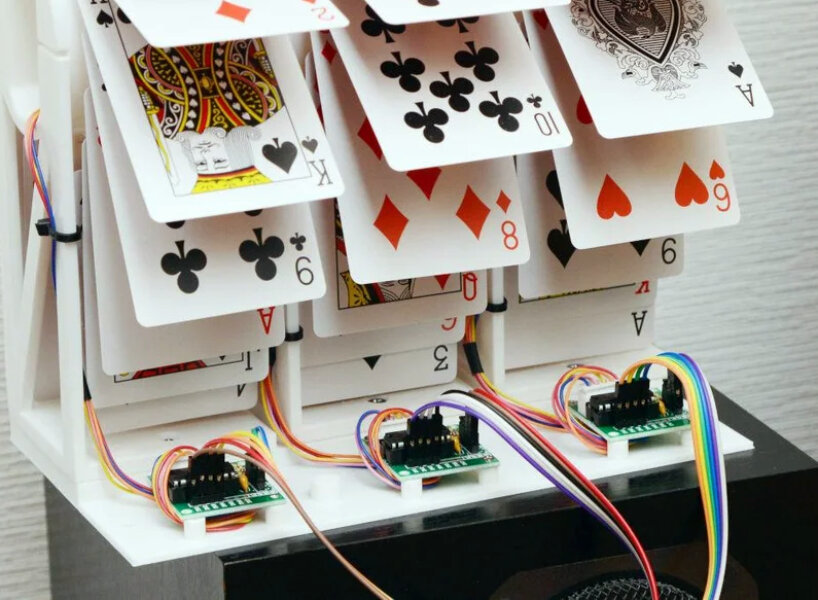designer turns playing cards into a mechanical flip clock using 3D-printed wheel
Casino’clock uses playing cards for its flip clock
Japanese designer Shinsaku Hiura transformed his deck of French-suited playing cards into a modern and minimalist robotic flip clock called Casino’clock using his 3D-printed parts including the mechanism’s spinning wheel. The toy-looking clock reminisces the vintage time devices and looks like it can be added to a viewer’s array of smart-home technology, but it might take some time to get used to the flapping sound and non-traditional digit setting of the cards.
The designer says one of the challenges for the project is to make a split-flap display and the fabrication of the flaps, leading him to use playing cards that can be found in households for the flaps of his basic machinery and to employ as few parts as possible to make his idea work. The minimalist design consists of three time displays without sensors, three 28BYJ-48 stepper motors with driver boards, an ESP32 microcontroller with WiFi and 12 or more IO ports – the designer used M5stamp C3 – a double-sided tape, tapping screws, and zip ties to hold the parts together.

images courtesy of Shinsaku Hiura
Installing a motor behind the spinning wheel
Shinsaku Hiura says that printing the parts comes next. He produced a base wheel with snap-fit system to let the cards rotate. He inserted the playing cards one by one into their hinge or cardholder which would then be attached and locked to the wheel. Before he jammed the card into the hinge, he had tested first how secured it would be during the motion by locking the card holder onto the 3D-printed rotor and giving it a push-and-pull test.
Next, he put the thumb-sized, round motor behind the rotor and screwed it in. He mounted the now motor-driven spinning wheel onto a set of pillars chained by zip ties so they would not collapse. ‘If they are loose, one drop of superglue from the outer hole will fix it,’ writes the designer. Once satisfied, he continued to insert the playing cards into their hinges until he created an umbrella of cards attached to the rotor.

designer turns playing cards into a mechanical flip clock using 3D-printed wheel
A microcontroller makes the flip clock work
He had placed his double-sided tape at the bottom of each card and slid it into the hinge, so the card would not fall during the rotation. After this, he installed an L-shaped hook at the top part of the rotor, the element that would stop his cards from just plunging without halting.
He tested his creation using his microcontroller, the tool that makes the flip clock rotate. He did this for the three units until one set was dedicated to the hour while the other two were for the minutes. Depending on the user, the Joker means zero while the Jacks are for 11, Queens for 12, and Aces equate to 1. Viewers can also make the playing cards flip clock on their own as the designer uploads the instructions and files on his page.

playing cards flip clock with the microcontrollers



